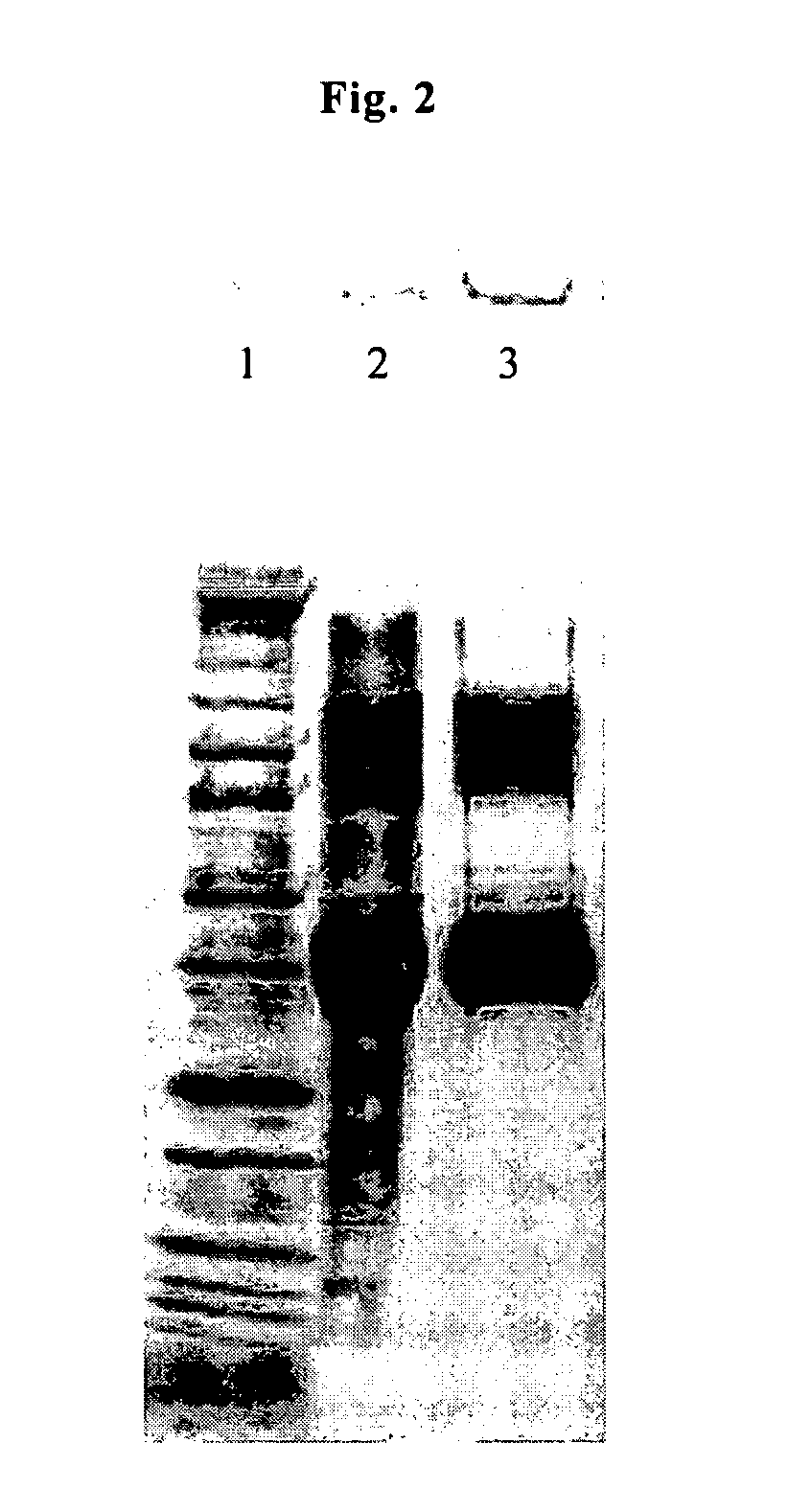Process for purifying proteins in a hydrophobic interaction chromatography flow-through fraction
- Summary
- Abstract
- Description
- Claims
- Application Information
AI Technical Summary
Benefits of technology
Problems solved by technology
Method used
Image
Examples
example 1
Purification of IL1R-II
[0066] An HIC flow-through step on Macroprep t-butyl (BioRad Laboratories, Inc.) was employed in purifying a soluble extracellular domain of IL1R-II. A sample containing IL-1R-II was first subjected to purification on a TMAE Fractogel anion-exchange column using 25 mM Tris, pH 8 as the equilibration and wash buffer and 25 mM Tris, 150 mM NaCl, pH 8 as the elution buffer. The HIC step was performed at pH 7.0 with 600 mM citrate in the load buffer. FIG. 1 shows a representative chromatogram of the flow-through step on the t-butyl resin. As can be seen in the figure, a majority (˜90% by a quantitative assay) of the loaded protein flows through under these conditions. An elution peak is observed during a wash with 25 mM phosphate, pH 7.0 and a smaller peak was observed in the 0.5N NaOH strip.
[0067] Table I shows the CHO host cell protein (CHOP) levels in the HIC load, HIC flow-through, and HIC elution fractions from the flow-through purification of IL1R-II shown...
example 2
Purification of RANK:Fc
[0069] The HIC step was employed after the Protein A purification step during downstream processing of RANK:Fc, an Fc fusion protein. At this stage in the process, the predominant impurities in the product include CHOP (˜5-10000 ppm), leached protein A (50-200 ppm), high molecular weight aggregate (2-5%) and the peak C form of the protein (5-10%). The peak C form of the protein is potentially misfolded RANK:Fc that has been found to have a lower binding activity than the peak B (main peak) form.
[0070] RANK:Fc was purified in an HIC flow-through step using a Macroprep t-butyl resin prepared in accordance with the manufacture's directions. The column was prepared to a capacity of 15 mg / ml at an operating flow rate of 2 cm / min and sanitized with 0.5 NaOH. Following viral inactivation of the Protein A eluate pool, the eluate was diluted with 0.6M citrate solution (pH 6.0, 1:1.75 protein:salt ratio) to raise the final salt concentration of the feed load to 0.4M c...
example 3
Selectivity of Branched Hydrocarbon Functional Groups for Alternate Forms of RANK:Fc
[0073] A range of HIC support media were compared independently for their selectivity between the peak B and C forms of RANK:Fc as defined by an HIC assay consisting of linear gradient elution (1 to 0M ammonium sulfate) on a TSK Butyl NPR column. Specifically, the chromatography media that were tested included (a) Macroprep t-butyl, (b) TosoHaas Butyl 650M, (c) Butyl Sepharose FF, (d) TosoHaas Phenyl 650M, and (e) TosoHaas Ether 650M. Analytical injections (0.5 mL at a concentration range of 0.5-2 mg / mL of peaks B and C (obtained from a preparative linear gradient experiment on the TSK Butyl NPR analytical column) were loaded onto various HIC columns, and the columns were eluted with a gradient of 400 mM citrate to 0 mM citrate in 15 CV followed by 5 CV washes with water followed by 0.5N NaOH.
[0074] Peak B and C forms of the protein were separated by linear salt gradient (from 400 mM citrate to 0 m...
PUM
| Property | Measurement | Unit |
|---|---|---|
| Hydrophobicity | aaaaa | aaaaa |
Abstract
Description
Claims
Application Information
 Login to View More
Login to View More - R&D
- Intellectual Property
- Life Sciences
- Materials
- Tech Scout
- Unparalleled Data Quality
- Higher Quality Content
- 60% Fewer Hallucinations
Browse by: Latest US Patents, China's latest patents, Technical Efficacy Thesaurus, Application Domain, Technology Topic, Popular Technical Reports.
© 2025 PatSnap. All rights reserved.Legal|Privacy policy|Modern Slavery Act Transparency Statement|Sitemap|About US| Contact US: help@patsnap.com



